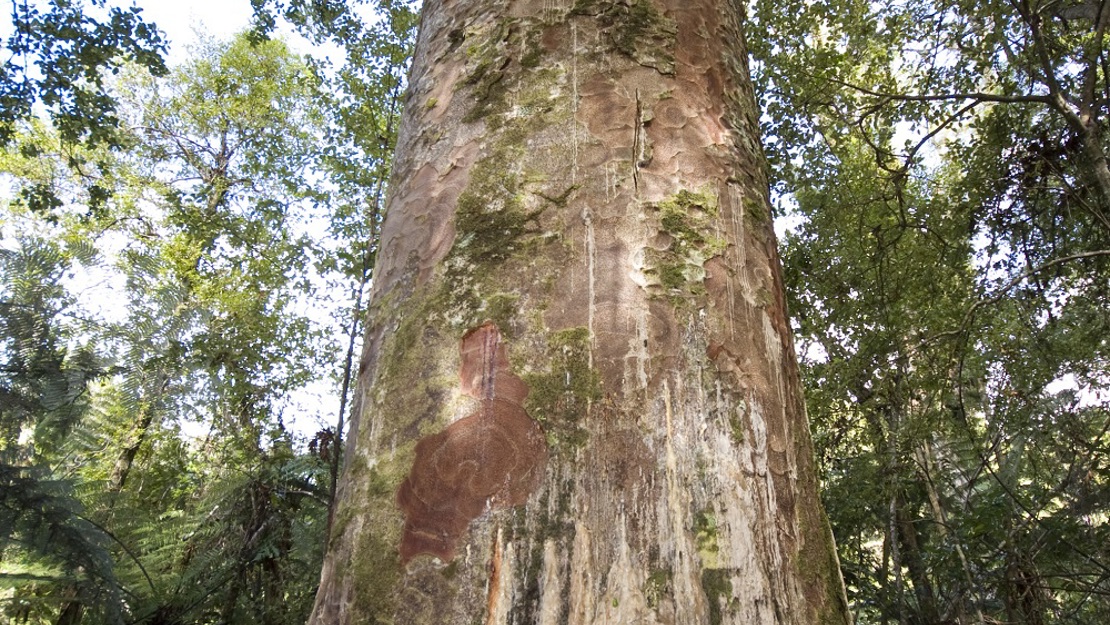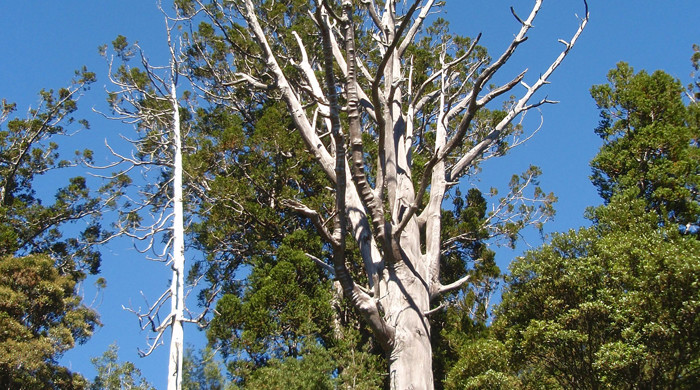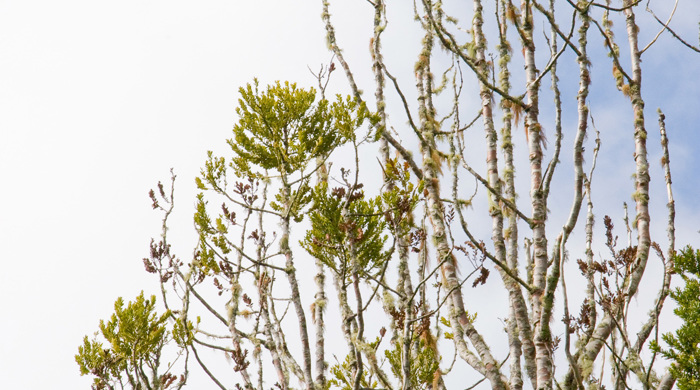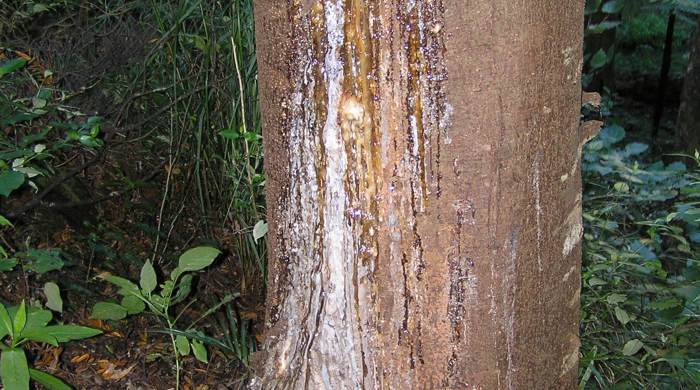Phytophthora agathidicida
Kauri dieback disease
Also known as:
PTA
Family: Pythiaceae
Origin: Unknown

Regional Pest Management Plan (RPMP) status
- Hauraki Gulf Controlled Area pest — Exclusion
- Whole region — Sustained control
- Unwanted organism
- Hunua – Exclusion
General description
Disease affecting kauri trees. Symptomatic trees exhibit root and collar rot, resin-exuding lesions, severe chlorosis, canopy thinning and mortality.
What you need to know
To help protect our environment:
- You must not distribute, move or release kauri dieback anywhere in the region.
- You must not move any untreated kauri plant material, soil or goods contaminated with soil into or out of an area within three times the drip line of any New Zealand kauri tree, unless the purpose of the movement is to dispose of the material at an Auckland Council approved containment landfill. Contact Auckland Council at pestfree@aucklandcouncil.govt.nz for information on approved landfills.
- You must not move any untreated kauri plant material, soil or goods contaminated with soil to or among Hauraki Gulf Islands, unless the purpose of the movement is to dispose of the material at an Auckland Council approved containment landfill. Contact Auckland Council at pestfree@aucklandcouncil.govt.nz for information on approved landfills.
- In the future, all commercial transport operators moving goods or people to or among Hauraki Gulf islands will need to have a Pest Free Warrant.
-
You must not move soil, or plants, or animals contaminated with soil, or goods contaminated with soil into the Hunua exclusion zone. The exception is plants that have been sourced directly from a Plant Pass accredited nursery.
-
Under the Ministry for Primary Industries’ Controlled Area Notices you also must not move footwear or other items contaminated with soil into the Hunua Ranges or into or or out of the Waitākere Ranges Controlled Area.
All occupiers of a commercial passenger boat or aircraft exit or entry point to the Hauraki Gulf Controlled Area islands must:
- provide information, supplied by Auckland Council, to passengers about kauri dieback disease
- provide space for an Auckland Council-maintained phytosanitary station for passengers to use to prevent the spread of kauri dieback disease.
Habitats
Capable of infecting and causing mortality in kauri trees of any age, in the wild as well as planted trees. Also known to be able to colonise some other plant species.
Impact on environment
Fatal to kauri of all ages. Has the potential to cause functional extinction of kauri, with major consequences for other plants and animals that depend on kauri.
Control
Recommended approaches
Always clean your footwear and equipment before and after visiting forests, offshore islands or any other natural ecosystems. Even a pinhead-sized amount of soil can spread kauri dieback.
Always stay on the marked track (keep your dog on a leash in kauri forests), avoid walking on kauri roots, and respect any track closures.
Caution: When using any herbicide or pesticide please read the label thoroughly to ensure that all instructions and safety requirements are followed.






